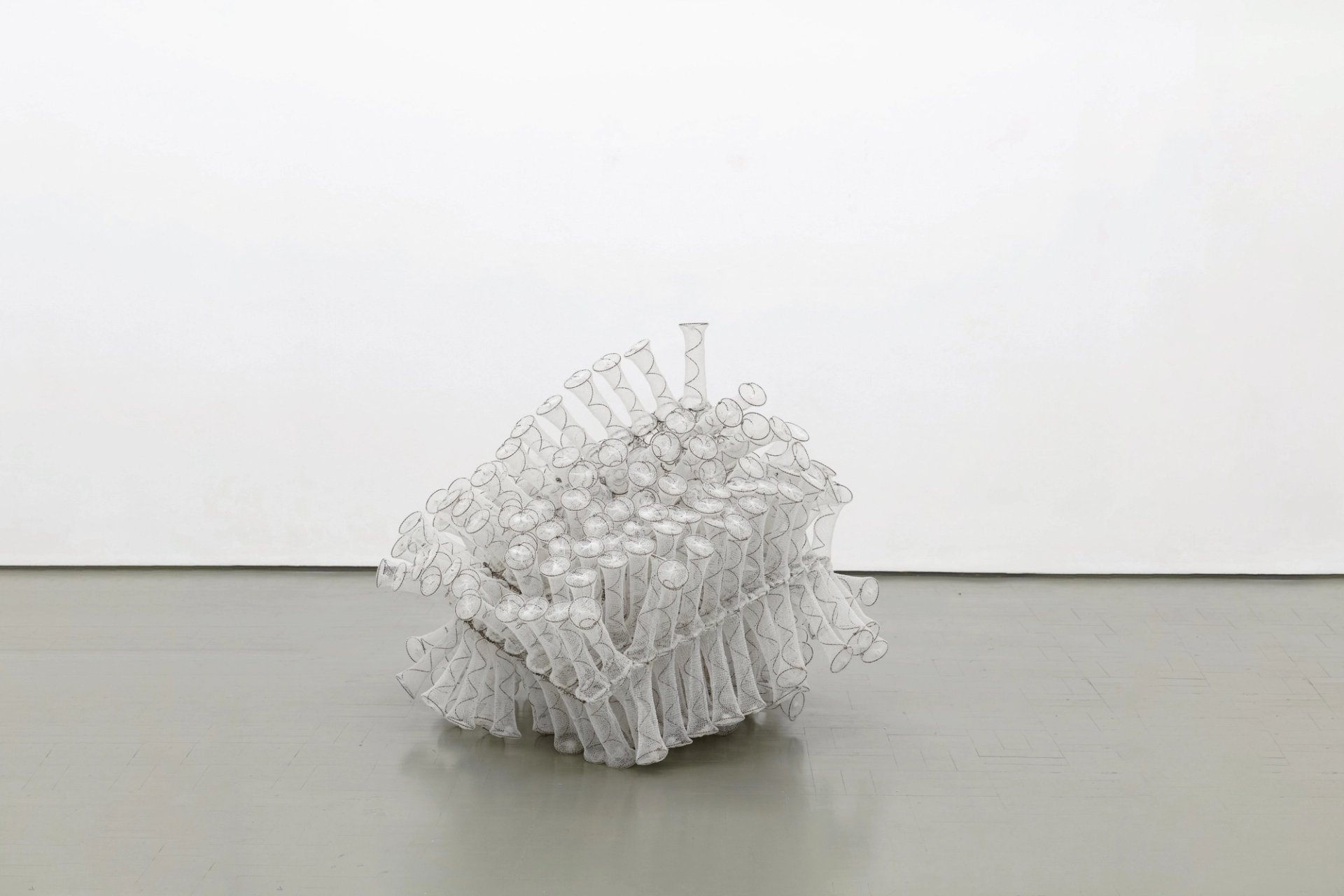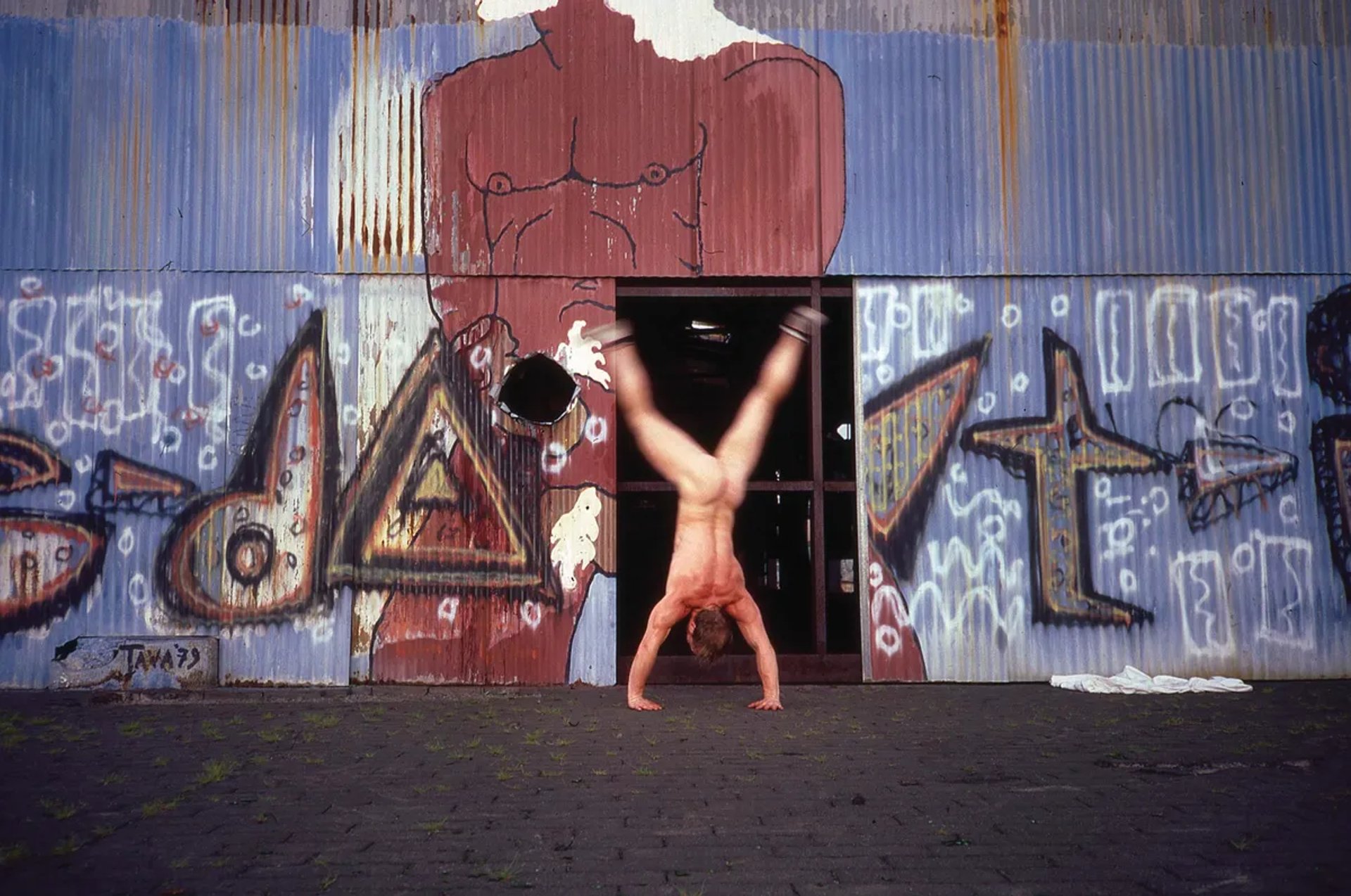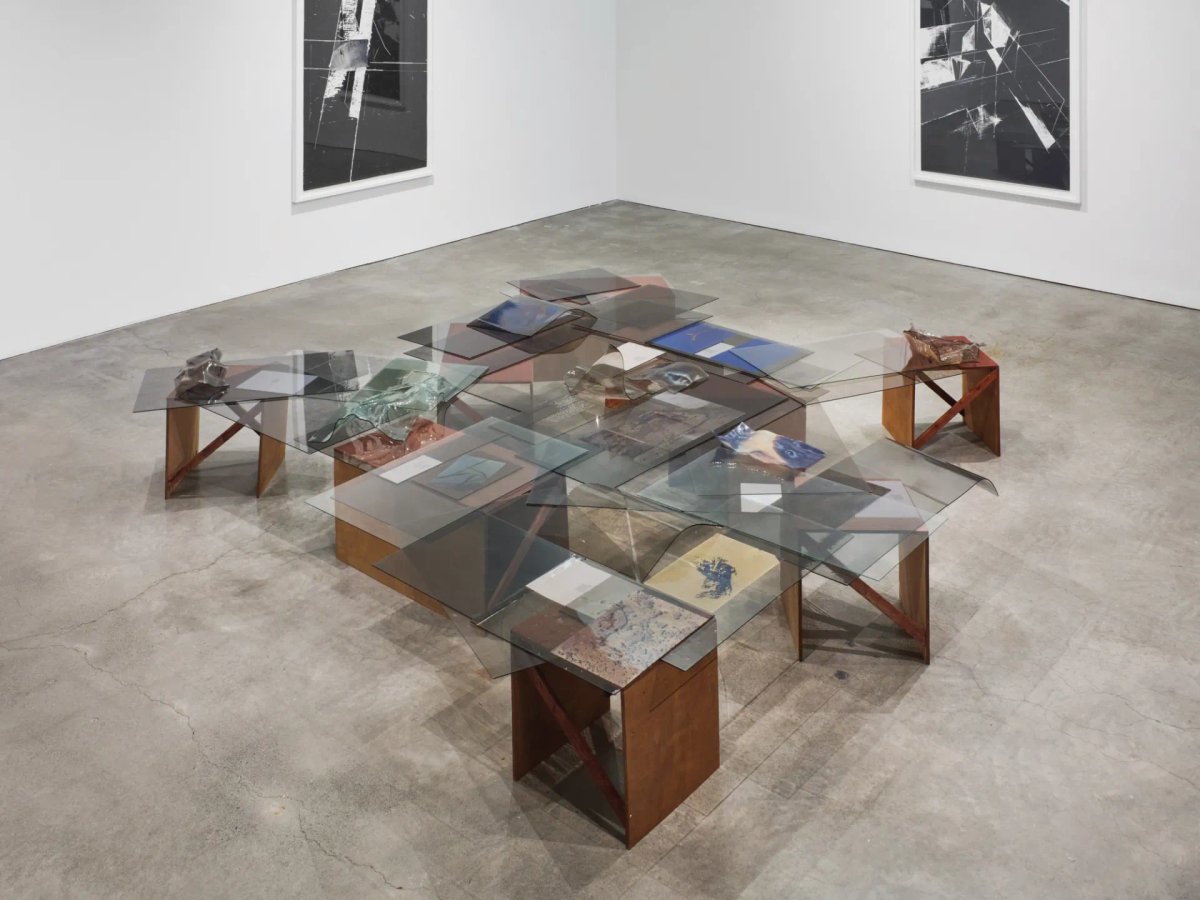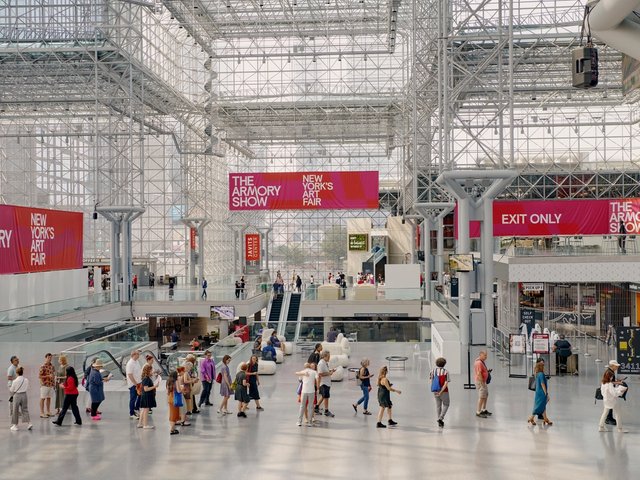Frieze’s 12th New York fair and fourth outing at The Shed (until 5 May) is also the first edition since the British company acquired the city’s largest art fair, The Armory Show, as well as Expo Chicago.
Perhaps reflecting this deepening commitment to New York, more than half of the fair’s 68 exhibitors have a space in the city. Locals participating for the first time include the fast-rising Tribeca gallery Kapp Kapp, and the heavyweight Gladstone Gallery is returning to the fair for the first time since it relocated from Randall’s Island to The Shed, with a solo stand of new works by Alex Katz. The fair’s programming also champions local non-profits through partnerships with Artists Space, High Line Art, Performance Space New York and the Art Production Fund.
“We are deepening our investment in non-profits, especially those committed to performance,” Christine Messineo, Frieze’s director for the Americas, tells The Art Newspaper. “We are interested in highlighting works that don’t often have that chance at a fair setting.”
To be sure, the usual blue-chip galleries with New York headquarters are all returning, as are plenty of mid-size Manhattan spaces, including 303 Gallery, Miguel Abreu Gallery, James Cohan, David Lewis and Alexander Gray Associates. Among the latter group is Ortuzar Projects, whose Frieze stand is devoted to textile works by the Paraguayan artist Feliciano Centurión, who in 1996 died at the age of 34 due to Aids-related illness. The artist’s collaged blankets—which he called frazadas—hold embroidered personal texts and found items related to his diagnosis, tapping into growing interest among curators, dealers and collectors in textile-based artists overdue for career re-evaluations.
International outlook
“While his work is beginning to receive increased scholarship in English, Centurión developed a complex practice within his short lifetime that is deserving of significant further research and attention,” says the dealer Ales Ortuzar. “Despite being a New York gallery, our programme has a strong contingent of Latinx artists and artists from the Spanish-speaking world, and it’s especially exciting to share those artists with the international audience that convenes in New York during Frieze.”
An international gallery hoping to reconnect with New York’s art audience is the South African fixture Stevenson. The gallery’s booth includes works by the painters Thenjiwe Niki Nkosi and Serge Alain Nitegeka, as well as pieces by the sculptor Bronwyn Katz, the mixed-media artist Moshekwa Langa and the photographer Mame-Diarra Niang, whose incredibly hazy portraits are currently the subject of a solo exhibition at Cape Town’s Zeitz Mocaa.

Bronwyn Katz’s /ui !nans (one hailstone) (2023), which will be at Stevenson’s stand
Photo: Mario Todeschini
“New York was the first city that took a chance on us, a young gallery from a part of the world that had been under the radar, when we got accepted to The Armory Show in 2007,” says Sinazo Chiya, Stevenson’s director. “To be returning to a New York fair in 2024 after a five-year hiatus since we did Frieze New York in 2018 feels timeous.”
Easing the cost
Frieze arrives on the heels of a string of closures at closely watched smaller galleries—including Helena Anrather, Fortnight Institute, Queer Thoughts, Foxy Production and JTT—that has underlined the growing challenges facing dealers in the city. The Focus sector aims to ease some of the costly toll of fair participation for young galleries, including through a partnership with the Italian luxury fashion house Stone Island. The company provides support to the section’s exhibitors beyond the subsidised booth prices offered by Frieze.
Lumi Tan, the director of Luna Luna in Los Angeles, has previously juried Frieze New York’s 2021 Frame Prize and this year has curated its selection of 11 galleries with the goal to “support and acknowledge the galleries who have built themselves up in the last 12 or so years as small businesses”, she says. Among the Focus sector exhibitors with New York spaces are Company Gallery and Gordon Robichaux.
Two galleries are graduating from Frieze New York’s Focus section to its main gallery sector this year—Bogotá’s Instituto de Visión and Château Shatto from Los Angeles—underlining the subsidised section’s potential to support growth. Newcomers to both Frieze New York and the Focus section this year include the Lisbon-based gallery Madragoa, which is showing Sara Chang Yan’s abstract wood paintings, and Chicago’s Patron Gallery, whose stand features a mixed-media presentation by 2024 Whitney Biennial artist Charisse Pearlina Weston.

Stanley Stellar, Robert Pedantic (1983), on show at Kapp Kapp’s booth
Courtesy of the artist and Kapp Kapp
Kapp Kapp is making its Frieze debut with a solo presentation of the New York photographer Stanley Stellar’s homoerotic images of the West Side piers, which have been printed in colour for the first time for this display. The gallery is also celebrating the re-release of Stellar’s book The Piers, which offers a fuller catalogue of his black-and-white photographs of gay men cruising the post-industrial Hudson riverfront in the 1970s and 1980s for sex and camaraderie.
“Choosing this body of work was a no-brainer given the fair’s vicinity to Stanley’s subject matter,” says Daniel Kapp, who co-founded the gallery with his brother Sam Kapp. “Back in the day, Stanley couldn’t afford colour prints. The presentation celebrates a collective memory for an intergenerational community of queer people, including those who never experienced the piers.”
As a gallery founded less than five years ago, the visibility afforded by Frieze was a major draw for Kapp Kapp’s founders. “There is the obvious economic side of fair participation, but we are looking forward to connecting with a new calibre of exposure to collectors and curators,” Daniel Kapp says. The gallery is doubly exposed this week, with a simultaneous presentation in the Curated Spotlight section of Nada New York (2-5 May), which offers stands with costs underwritten by TD Bank. There, Kapp Kapp’s stand is devoted to the Bay Area ceramic artist Dorian Reid, whom the gallery recently started representing.
Frieze’s contributions to New York’s bounteous spring cultural offerings reach well beyond Hudson Yards this year. Matty Davis’s nightly performance Die No Die (until 2 May), organised by the High Line Art curator Taylor Zakarin, will feature five collaborators navigating the elevated park in a processional choreography from its north tip towards the Whitney Museum of American Art at its southern end. And in Midtown, Art Production Fund is reviving a fixture of Frieze’s most recent Los Angeles fair by staging a new edition of Sharif Farrag’s participatory races with modified remote-controlled cars, Gotham Grinders: Hamster Wheel, at Rockefeller Center. The ceramic hamsters, which sport New York-specific patches, are intended as tributes to the culture of constant hustling that the city’s artists and dealers know so well.






